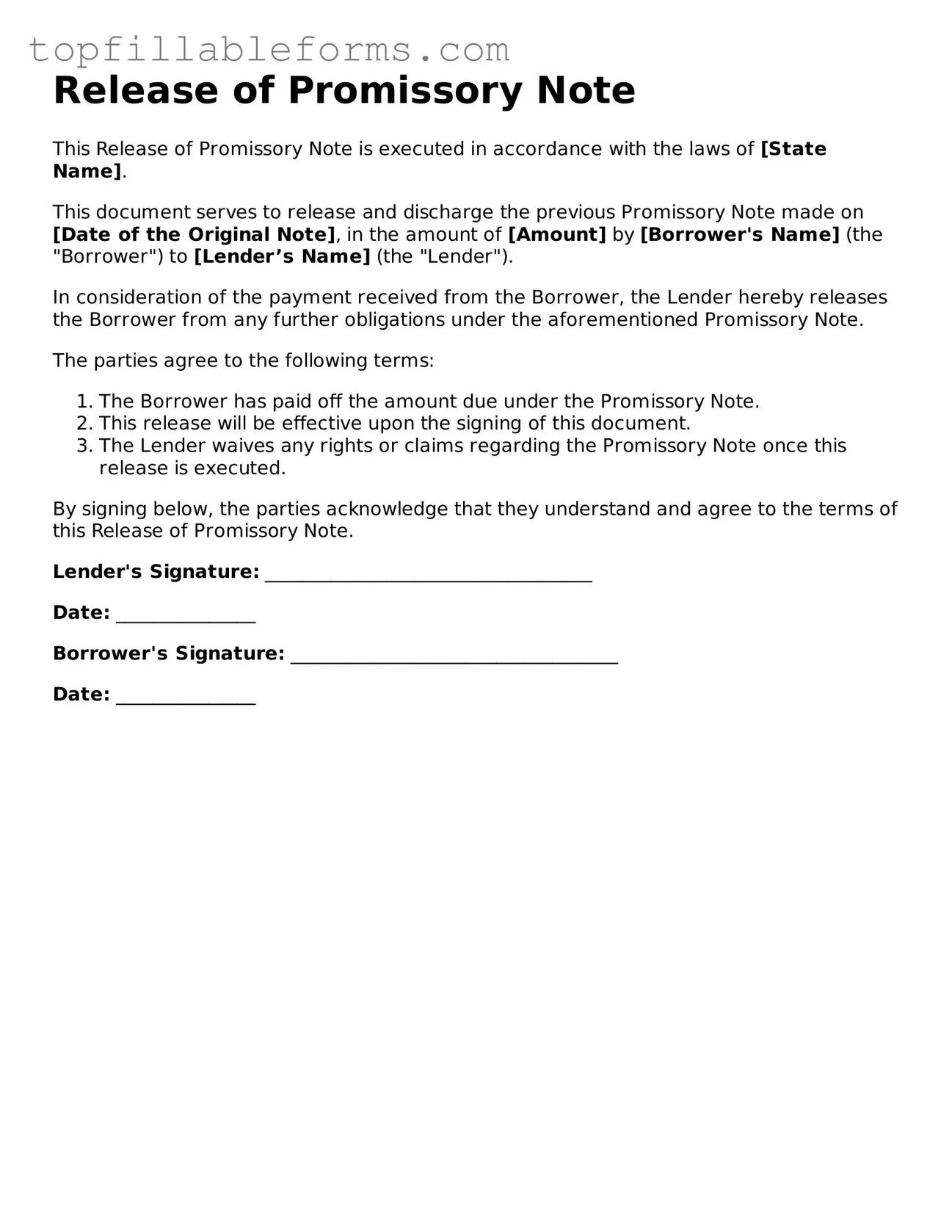Free Release of Promissory Note Form
A Release of Promissory Note form is a legal document used to formally acknowledge the satisfaction of a debt, indicating that the borrower has fulfilled their obligation to repay the loan. This form serves to release the borrower from any further liability associated with the promissory note. Understanding its purpose and proper use is essential for both lenders and borrowers in ensuring clear financial transactions.
Open Release of Promissory Note Editor Here
